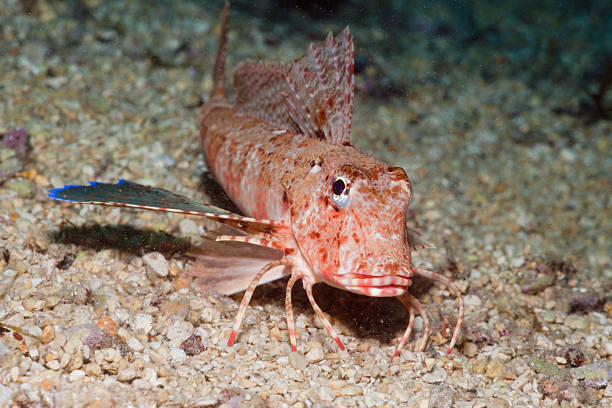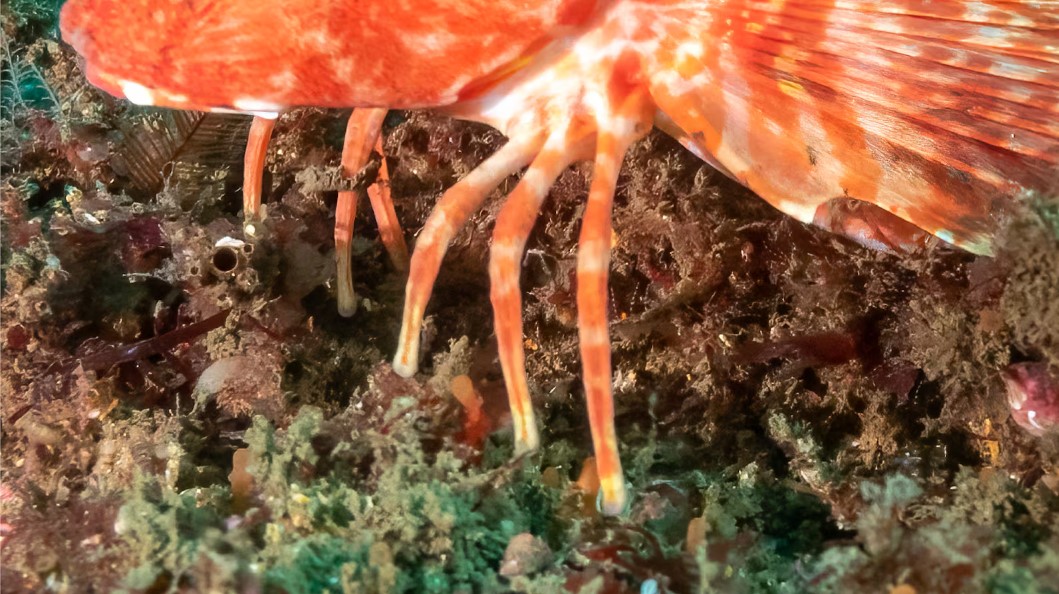In a groundbreaking discovery, researchers have revealed that sea robins, unusual fish with a blend of features resembling birds and crabs, possess legs that serve not only for locomotion but also as sophisticated sensory organs.
Published on September 26 in *Current Biology*, this research highlights how these marine creatures use their legs to locate buried prey.
Nicholas Bellono from Harvard University, along with David Kingsley from Stanford University, stumbled upon sea robins during a trip to the Marine Biological Laboratory in Woods Hole, Massachusetts.
Fascinated by the fish’s ability to uncover hidden food, the team conducted experiments that demonstrated the sea robins’ remarkable sensitivity to ground-up mussel extract and even individual amino acids.

The study found that the legs of sea robins are equipped with sensory papillae, densely populated with touch-sensitive neurons and taste receptors.
These adaptations enable sea robins to dig effectively and detect chemical signals in their environment. “We were struck by the legs shared by all sea robins, which set them apart from most fish,” Kingsley noted, emphasizing the evolutionary innovations observed in these creatures.
Further investigations revealed that a conserved transcription factor, tbx3a, plays a crucial role in developing the sea robins’ sensory legs and their foraging behavior.
This discovery illustrates the principle of evolution, where new traits often emerge from pre-existing genetic components.
The findings not only enhance our understanding of the evolutionary processes in sea robins but also pave the way for broader research into the genetic changes driving the evolution of unique traits in various organisms.
The researchers are eager to explore the specific genetic modifications that contributed to the sea robins’ distinctive adaptations, shedding light on the intricate tapestry of evolutionary biology.

